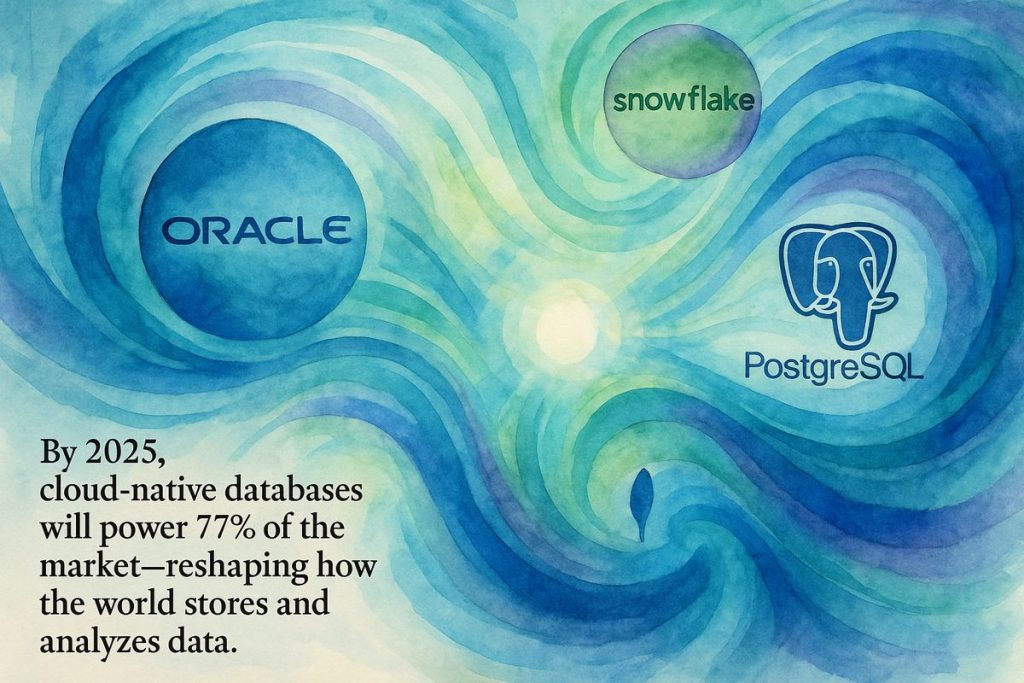In 2025, the database world is wild and fast-changing, with Oracle still leading, but MongoDB and Snowflake quickly catching up. MongoDB shines with its flexible, cloud-friendly design and is loved by developers, tech companies, and retailers. Snowflake impresses with powerful data analytics and super-strong privacy features that let companies safely share and study information. The whole market is exploding in size, especially in cloud-based services, turning old leaders and new challengers into fierce rivals. It’s not a quiet field—everyone’s racing to avoid being left behind in this huge, high-stakes jungle.
Who are the leading database platforms in 2025 and what sets them apart?
In 2025, Oracle remains the top database platform, but MongoDB and Snowflake are rapidly rising. MongoDB excels in NoSQL and cloud flexibility, boasting strong adoption in tech and retail. Snowflake stands out for advanced analytics, data collaboration, and robust privacy features like Data Clean Rooms.
The 2025 database market is less a tranquil garden, more a teeming jungle—everywhere you look, something’s evolving, hunting, or mutating in the shadows. Data volumes metastasize daily, cloud-native applications sprout like mushrooms after rain, and the frontier between analytics and AI is now so blurry even the experts squint. I sometimes wonder: are we database architects, or beleaguered park rangers herding a stampede of electrons? But I digress.
Let’s set the stage. Giants like Oracle and AWS still cast long shadows, but the real kinetic energy comes from insurgents like Snowflake and MongoDB, who seem to have mainlined espresso and ambition in equal measure. There’s no lull in this ecosystem—just the low hum of innovation, punctuated by occasional howls of legacy pain.
Market Mechanics: Numbers Don’t Lie (But They Do Smirk)
By the numbers, the database market is marching toward a whopping $150.38 billion in end-of-2025 revenue. Blink, and by the time you check again, forecasts have it ballooning to over $292 billion in a handful of years—a growth trajectory that would make even a Silicon Valley VC sweat. This isn’t just hand-waving optimism, either: the Database-as-a-Service (DBaaS) sector is pulling much of the weight, clocking in at a compound annual growth rate of 20% through 2028 (source). I had to stop and double-check that figure, thinking, “Is this just another PR fever dream?” But no, the Nasdaq analysis holds up.
It’s cloud or bust: DBaaS is projected to swallow roughly 77% of the database management market inside three years (source). That’s not a subtle shift; it’s a tectonic plate sliding under your feet—slow at first, then, bam! Cataclysm. Everywhere I go—trade shows, Slack channels, even my neighborhood cafe—I overhear the same anxious refrain: “How do we not get left behind?”
But let’s get granular. According to DB-Engines, Oracle’s still clinging to the top rung. MongoDB and Snowflake, nimble as cats, have clawed their way to fifth and sixth respectively, while PostgreSQL purrs contentedly as the open-source favorite. The market is a palimpsest—a layered record of old hierarchies and new disruptors.
MongoDB and Snowflake: Sultans of Structure and Synapse
MongoDB: Document Evangelist with a Taste for Scale
MongoDB isn’t just showing up to the NoSQL party; it’s hosting, DJ-ing, and running coat check. Currently, it commands 8.14% of the global DBMS market—no mean feat when Oracle and Microsoft still prowl the scene. In the cloud-specific melee, its share jumps to 15.7%. The Atlas cloud platform, with its JSON-like document model and multi-cloud reach (AWS, Google Cloud, and Microsoft Azure, no less), keeps drawing admirers from tech’s glitterati and retail’s workhorses alike.
A micro-story: Last month, I watched a retail client pivot overnight from a legacy monolith to MongoDB Atlas to handle a Black Friday surge. The result? Their peak traffic hit 120,000 transactions per minute—without so much as a sweaty-palmed midnight call to tech support. Relief, tinged with disbelief, was the mood in the war room.
MongoDB isn’t just a pretty interface; it’s got 47,500 customers, many of them in tech (38%), finance (22%), retail (15%), and healthcare (12%). Despite a net loss in FY2025—thanks to aggressive R&D spending—it raked in $2.01 billion in revenue, according to Substack. And with over 60 million downloads and 12,500 contributors, the developer love is tangible, almost as bracing as the burnt-coffee tang at the last hackathon.
Snowflake: Data Collaboration in a Crystal Palace
Where MongoDB feels like a bustling bazaar, Snowflake is the immaculate art gallery of database design—everything in its right place, well-lit and heavily secured. Its signature innovation? Data Clean Rooms. Imagine a hyperspectral chamber where data from multiple parties can be analyzed, sliced, and diced—all while keeping the actual records invisible to prying eyes. Privacy freaks and compliance officers rejoice! Row-level access controls and robust audit trails are the norm, not the exception.
Snowflake sits comfortably in sixth place globally, but its influence is outsized thanks to its prowess in analytics and native elasticity. If MongoDB is the Swiss Army knife, Snowflake is the laser scalpel. Some analysts, like those at Trefis, are even touting an 80% return potential—audacious, but not entirely unrealistic given current momentum.
Snowflake’s architecture separates storage from compute, a move that feels almost poetic after years of chained-together legacy stacks. Is it perfect? No
